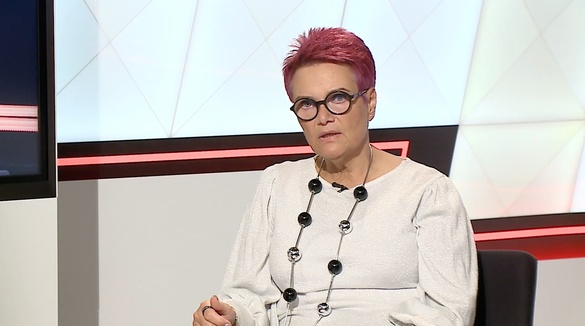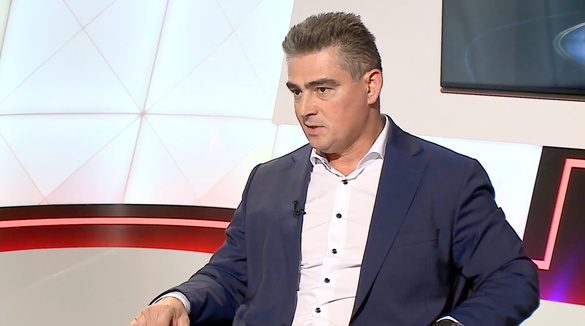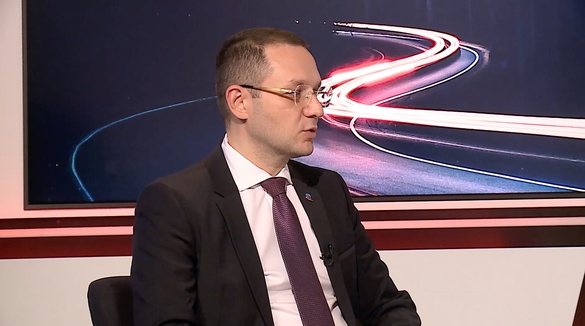ESG Governance and the Public–Private Synergy: The Key to Renewable Energy Stability

Romania’s energy sector stands at a critical crossroads — shaped by structural challenges and vast opportunities for modernization. Experts emphasize the urgent need for major investment in networks, renewable integration, and innovative technologies. Organizational culture, leadership education, and corporate governance have become essential pillars for accelerating the green transition and ensuring the country’s energy security.
Guests of the fourth episode of Academia de Guvernanță — a joint media project by Envisia, Profit.ro, and Prima News — included Alexandru Chiriță, CEO of Electrica, Christian Leonte, CEO of Waldevar Holding, and Dr. Gabriela Hârțescu, Dean and Co-Founder of Envisia. The discussion was moderated by Sebastian Zachmann.
The Role of Corporate Governance in Energy Sector Stability
Romania benefits from a balanced energy mix, yet infrastructure gaps and slow decision-making constrain adaptability.
Dr. Gabriela Hârțescu, Dean of Envisia, highlighted that incoherent public governance and the absence of substitute solutions lead to social vulnerability:“The problem lies in the fact that when we make quick decisions to close fossil or traditional power plants, governance should ensure alternative solutions. This market volatility also has social consequences, particularly for vulnerable groups, compounded by the poor energy efficiency of old buildings.”
From the private sector’s perspective, Christian Leonte stressed that energy access is not the issue — coordination is:“Romania is advantaged by its energy mix. The future lies in hybridization. It certainly doesn’t belong to one solution or another, but to intelligent coordination and a holistic approach.”
For Alexandru Chiriță, CEO of Electrica, the main bottleneck remains infrastructure:“Our only real problem is in the networks. For Electrica, this means about €1.5 billion in investments over the next 10 years. The actual need is at least double. We must act now to avoid ending up with capacities that are built but disconnected.”
The ESG Competence Gap at Board Level: The Power of Specialized Education
Implementing ESG governance principles in energy companies requires educated leadership aware of the long-term impact of decisions.
“A paradigm shift is needed. Boards of directors must integrate sustainability into long-term strategy. The tone must be set from the top — sustainability is not a reporting objective, but a core company value,” emphasized Dr. Gabriela Hârțescu.

This transformation demands leaders capable of navigating ESG regulations and translating sustainability into measurable performance.
Bottlenecks and Solutions: Strengthening Public–Private Collaboration
European funds and investment capital are vital for modernizing Romania’s networks, but excessive bureaucracy slows progress.
Alexandru Chiriță explained:
“EU funds are extremely important, as they allow us to grow investments independently of distribution tariffs. Within the Electrica Group, we’ve attracted over €500 million, but more support and faster procurement processes are needed.”
Adding to this, Christian Leonte pointed to indirect market barriers:
“Investor challenges relate to resources and networks. Without infrastructure modernization, renewable projects remain mere intentions. A key barrier is allocating resources and building the grid connections required for renewables — otherwise, photovoltaic parks become nothing more than magnets for unused financial capital.”

New Paradigms: Storage, Green Hydrogen, and Prosumers
Romania must embrace new technologies — from energy storage and green hydrogen to the prosumer model — to stabilize its energy system.
Christian Leonte gave practical examples:“We’re exploring what may seem exotic today — floating photovoltaic systems, automation, and dynamic control. We’re heavily investing in SCADA and automated monitoring systems. All this harmonization work is part of our efficiency strategy.”
Alexandru Chiriță emphasized leadership adaptation to emerging technologies:“It has to start with us. This technological progress must be implemented collaboratively. The new generations are much more accustomed to it, and they’ll only need to find their path and purpose. But for all of us, the key remains the desire to learn.”
Completing the perspective, Dr. Gabriela Hârțescu added:“Energy leaders must become hybrid — understanding technology, finance, and ESG governance. They’ll be the ones integrating what were once isolated areas of expertise into a single, global leadership capability. A hybrid leader can make decisions that are technically viable, financially feasible, and ESG-sustainable. Education is the invisible infrastructure that will sustain this transition.”
Experts’ Perspectives and Conclusions
The discussion concluded with a shared message: sustainability cannot be achieved without collaboration, education, and a shared vision between the public and private sectors.
Christian Leonte, CEO of Waldevar Energy, underlined the importance of interdisciplinary collaboration in leadership: “Transdisciplinarity in management is vital — it ensures team integration. Things can only be achieved together. Communication is crucial, and that’s where it all must start.”
Alexandru Chiriță, CEO of Electrica, offered an optimistic, yet pragmatic view:“Let’s look to the future with optimism and do everything we can to be better. If we all start change with ourselves and stop waiting for others to solve things, progress will come much faster.”

Dr. Gabriela Hârțescu, Dean and Co-Founder of Envisia, emphasized education as the bridge between sectors:“Education will make us open to the challenges ahead. It will serve as the bridge between the private and public sectors — an investment that truly delivers a measurable return, with impact at both organizational and macroeconomic levels.”
She concluded that leadership and governance education represent the “invisible infrastructure” of any sustainable economy — where competencies and mindsets turn principles into results.
Five Key Takeaways
- Romania’s energy mix is strong, but networks remain vulnerable. Despite a balanced combination of renewable, nuclear, and conventional energy, underdeveloped grids limit the potential of the green transition.
- Investment and innovation are urgent. Romania needs over €15 billion by 2030 to modernize its energy infrastructure and integrate digital and automation technologies.
- Hybrid leadership and culture drive sustainable change. The green transition is as much about mindset as it is about technology.
- EU funds can accelerate modernization. Simplified regulations and reduced bureaucracy can turn resources into tangible results for both the economy and the environment.
- Education and collaboration are the foundation of success. Building leaders who understand complexity — and fostering partnerships between business, government, and academia — are key to long-term energy security.
Academia de Guvernanță – Dialogue for a Better Romania
A media project by Prima News, Profit.ro, and Envisia — Romania’s first business school dedicated to governance and the professionalization of board members. Every Friday at 8:00 PM on Prima News. Replays on Tuesday at 10:00 PM. Online at Profit.ro.
About Envisia
Envisia is Romania’s first business school dedicated to corporate governance and the professional development of board members. Through internationally accredited programs, masterclasses, and media initiatives like Academia de Guvernanță, Envisia helps shape leaders who turn good governance principles into performance and trust. Learn more at www.envisia.eu
Recommended articles
Leadership, Boardroom Dynamics & Crisis Response
Governance & Board Effectiveness
Future of Boards & NED Careers
Future of Boards & NED Careers
ESG & Risk Oversight
Leadership, Boardroom Dynamics & Crisis Response
Governance & Board Effectiveness
Governance & Board Effectiveness
Leadership, Boardroom Dynamics & Crisis Response
Future of Boards & NED Careers
Governance & Board Effectiveness
Governance & Board Effectiveness
Governance & Board Effectiveness
Governance & Board Effectiveness
Future of Boards & NED Careers
Leadership, Boardroom Dynamics & Crisis Response
Future of Boards & NED Careers
 BACK TO ARTICLES
BACK TO ARTICLES
 Facebook
Facebook Linkedin
Linkedin
